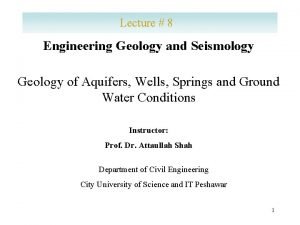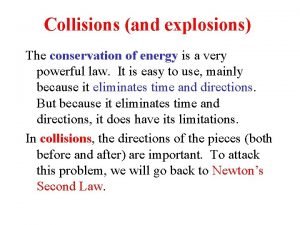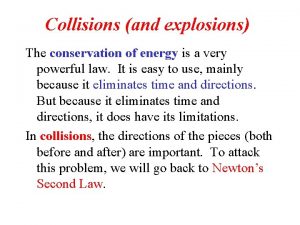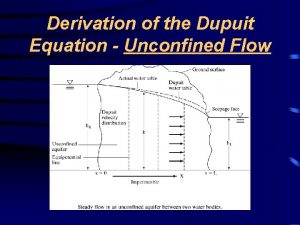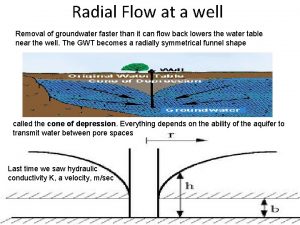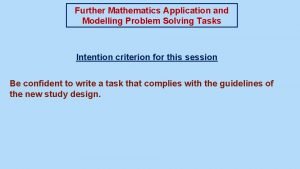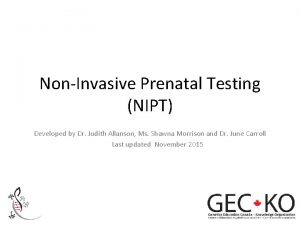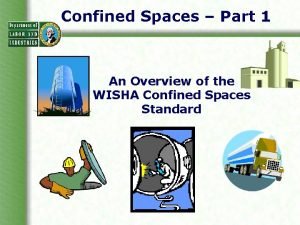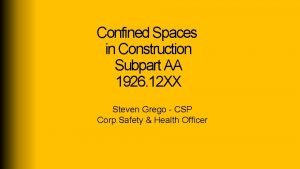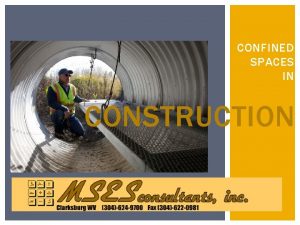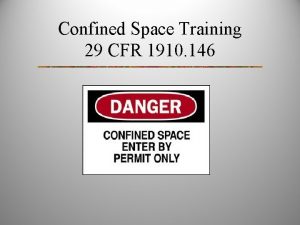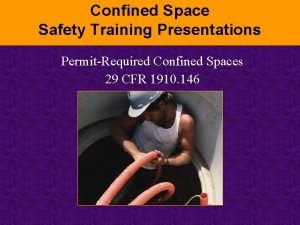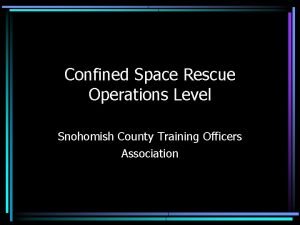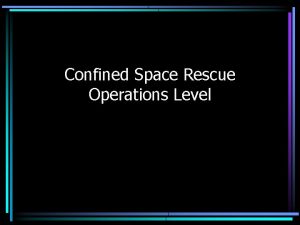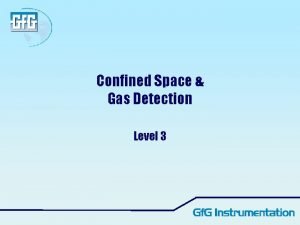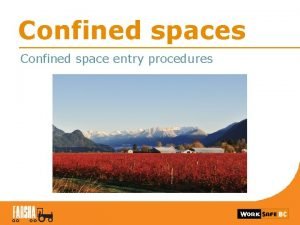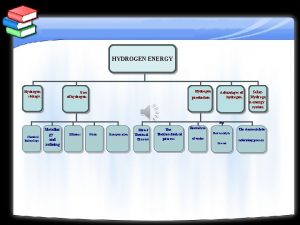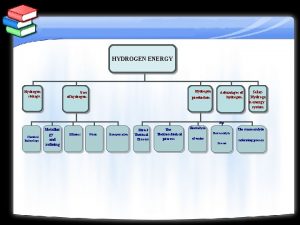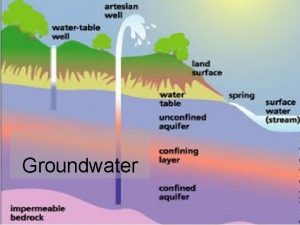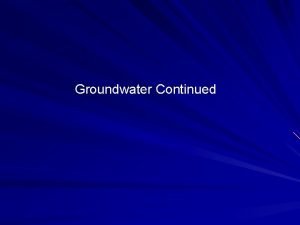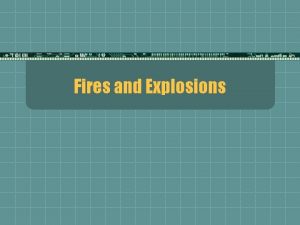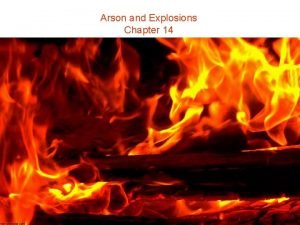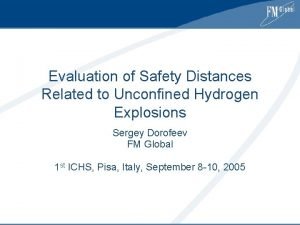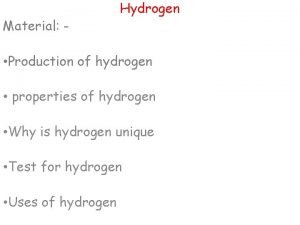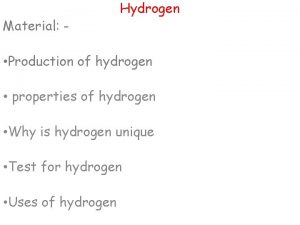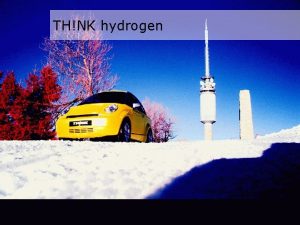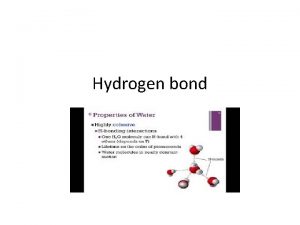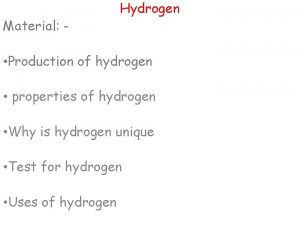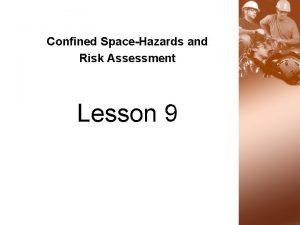Numerical modelling of unconfined and confined hydrogen explosions






![Unconfined-congested vapour cloud explosion – source overpressure 10000 y=x -50% Calculated Overpressure [mbar] 50% Unconfined-congested vapour cloud explosion – source overpressure 10000 y=x -50% Calculated Overpressure [mbar] 50%](https://slidetodoc.com/presentation_image_h2/a58fd9448802f03a254a37a9830455de/image-7.jpg)
![Unconfined-uncongested vapour cloud explosion - source overpressure Sato et al. [7] Saitoh et al. Unconfined-uncongested vapour cloud explosion - source overpressure Sato et al. [7] Saitoh et al.](https://slidetodoc.com/presentation_image_h2/a58fd9448802f03a254a37a9830455de/image-8.jpg)



![Confined vented vapour cloud explosion – maximum overpressure 10000 SCOPE overpressure [mbar] Bauwens et Confined vented vapour cloud explosion – maximum overpressure 10000 SCOPE overpressure [mbar] Bauwens et](https://slidetodoc.com/presentation_image_h2/a58fd9448802f03a254a37a9830455de/image-12.jpg)





- Slides: 17

Numerical modelling of unconfined and confined hydrogen explosions 8 th International Conference of Hydrogen Safety, Adelaide, 24 th September 2019 – ID 163 Pratap Sathiah and Arun K Ampi SHELL INDIA MARKETS PRIVATE LIMITED, BANGALORE, INDIA Company name appears here Date Month 2016 1

Definitions & cautionary note Reserves: Our use of the term “reserves” in this presentation means SEC proved oil and gas reserves. Resources: Our use of the term “resources” in this presentation includes quantities of oil and gas not yet classified as SEC proved oil and gas reserves. Resources are consistent with the Society of Petroleum Engineers 2 P and 2 C definitions. Organic: Our use of the term Organic includes SEC proved oil and gas reserves excluding changes resulting from acquisitions, divestments and year-average pricing impact. Resources plays: Our use of the term ‘resources plays’ refers to tight, shale and coal bed methane oil and gas acreage. The companies in which Royal Dutch Shell plc directly and indirectly owns investments are separate entities. In this presentation “Shell”, “Shell group” and “Royal Dutch Shell” are sometimes used for convenience where references are made to Royal Dutch Shell plc and its subsidiaries in general. Likewise, the words “we”, “us” and “our” are also used to refer to subsidiaries in general or to those who work for them. These expressions are also used where no useful purpose is served by identifying the particular company or companies. ‘‘Subsidiaries’’, “Shell subsidiaries” and “Shell companies” as used in this presentation refer to companies in which Royal Dutch Shell either directly or indirectly has control. Companies over which Shell has joint control are generally referred to as “joint ventures” and companies over which Shell has significant influence but neither control nor joint control are referred to as “associates”. The term “Shell interest” is used for convenience to indicate the direct and/or indirect ownership interest held by Shell in a venture, partnership or company, after exclusion of all third-party interest. This presentation contains forward-looking statements concerning the financial condition, results of operations and businesses of Royal Dutch Shell. All statements other than statements of historical fact are, or may be deemed to be, forward-looking statements. Forward-looking statements are statements of future expectations that are based on management’s current expectations and assumptions and involve known and unknown risks and uncertainties that could cause actual results, performance or events to differ materially from those expressed or implied in these statements. Forward-looking statements include, among other things, statements concerning the potential exposure of Royal Dutch Shell to market risks and statements expressing management’s expectations, beliefs, estimates, forecasts, projections and assumptions. These forward-looking statements are identified by their use of terms and phrases such as ‘‘anticipate’’, ‘‘believe’’, ‘‘could’’, ‘‘estimate’’, ‘‘expect’’, ‘‘intend’’, ‘‘may’’, ‘‘plan’’, ‘‘objectives’’, ‘‘outlook’’, ‘‘probably’’, ‘‘project’’, ‘‘will’’, ‘‘seek’’, ‘‘target’’, ‘‘risks’’, ‘‘goals’’, ‘‘should’’ and similar terms and phrases. There a number of factors that could affect the future operations of Royal Dutch Shell and could cause those results to differ materially from those expressed in the forward-looking statements included in this presentation, including (without limitation): (a) price fluctuations in crude oil and natural gas; (b) changes in demand for Shell’s products; (c) currency fluctuations; (d) drilling and production results; (e) reserves estimates; (f) loss of market share and industry competition; (g) environmental and physical risks; (h) risks associated with the identification of suitable potential acquisition properties and targets, and successful negotiation and completion of such transactions; (i) the risk of doing business in developing countries and countries subject to international sanctions; (j) legislative, fiscal and regulatory developments including potential litigation and regulatory measures as a result of climate changes; (k) economic and financial market conditions in various countries and regions; (l) political risks, including the risks of expropriation and renegotiation of the terms of contracts with governmental entities, delays or advancements in the approval of projects and delays in the reimbursement for shared costs; and (m) changes in trading conditions. All forward-looking statements contained in this presentation are expressly qualified in their entirety by the cautionary statements contained or referred to in this section. Readers should not place undue reliance on forward-looking statements. Additional factors that may affect future results are contained in Royal Dutch Shell’s 20 -F for the year ended 31 December, 2014 (available at www. shell. com/investor and www. sec. gov ). These factors also should be considered by the reader. Each forward-looking statement speaks only as of the date of this presentation, 14 April, 2015. Neither Royal Dutch Shell nor any of its subsidiaries undertake any obligation to publicly update or revise any forward-looking statement as a result of new information, future events or other information. In light of these risks, results could differ materially from those stated, implied or inferred from the forward-looking statements contained in this presentation. There can be no assurance that dividend payments will match or exceed those set out in this presentation in the future, or that they will be made at all. We use certain terms in this presentation, such as discovery potential, that the United States Securities and Exchange Commission (SEC) guidelines strictly prohibit us from including in filings with the SEC. U. S. Investors are urged to consider closely the disclosure in our Form 20 -F, File No 1 -32575, available on the SEC website www. sec. gov. You can also obtain this form from the SEC by calling 1 -800 -SEC-0330. 2

Agenda n Introduction n Unconfined vapour cloud explosion modelling and its validation n Conclusions 3

Hazards of hydrogen storage n Managing hazards associated with hydrogen in large-scale production and storage facility requires an understanding of the behaviour of potential accidental releases of hydrogen. n In case of accidental release into a confined or congested area, a vapour cloud explosion may occur if the cloud is ignited. n Depending on the type and degree of confinement or congestion, the explosion may result in an overpressure that has potential to cause multiple fatalities and building damage. n In this work, we present validation of vapour cloud explosion modelling of hydrogen and comparison against experiments available in open literature. n Modelling is performed using Fire Explosion Release Dispersion (FRED) software. n It has two modules for explosion modelling i. e. , Congestion Assessment Methodology (CAM) and Shell Code for Overpressure Prediction in Gas Explosions (SCOPE). 4

Modelling of unconfined vapour cloud explosions using CAM n The methodology is well validated for propane, methane and ethylene explosion experiments. It can be applied to different scales of domain, varying equivalence ratio and account for effects of different shapes of obstacles.

Experiments used for validation n Shirvill et al. performed several experiments investigating the effects of repeated pipe congestion on explosion. This involved ignition of hydrogen–air mixtures (with varying stoichiometric ratios) in a congestion rig consisting of horizontal and vertical pipe arrays. n Sato et al. experimentally measured explosion overpressure for hydrogenair mixture with equivalence ratio of 0. 6 and 1. The size of the gas cloud was varied from 5. 2 to 37 m 3.
![Unconfinedcongested vapour cloud explosion source overpressure 10000 yx 50 Calculated Overpressure mbar 50 Unconfined-congested vapour cloud explosion – source overpressure 10000 y=x -50% Calculated Overpressure [mbar] 50%](https://slidetodoc.com/presentation_image_h2/a58fd9448802f03a254a37a9830455de/image-7.jpg)
Unconfined-congested vapour cloud explosion – source overpressure 10000 y=x -50% Calculated Overpressure [mbar] 50% Snowdon et al. Shirvill et al. [] 1000 Shirvill et al [] Groethe et al. 100 10 10 1000 Experimental Overpressure [mbar] 10000
![Unconfineduncongested vapour cloud explosion source overpressure Sato et al 7 Saitoh et al Unconfined-uncongested vapour cloud explosion - source overpressure Sato et al. [7] Saitoh et al.](https://slidetodoc.com/presentation_image_h2/a58fd9448802f03a254a37a9830455de/image-8.jpg)
Unconfined-uncongested vapour cloud explosion - source overpressure Sato et al. [7] Saitoh et al. [8] Calculated Overpressure [mbar] Wakabayashi et al. [9] Otsuka et al. [10] 100 Kim et al. [11] Becker and Ebert [12] Groethe et al. [13] 10 1 1 10 100 Experimental Overpressure [mbar] 1000

120 60 100 50 80 CAM 60 40 20 0 0 20 40 Distance [m] 60 80 Overpressure [mbar] Unconfined-congested vapour cloud explosion – pressure decay as a function of distance 40 CAM 30 20 10 0 0 2 4 Distance [m] n The overpressure obtained using CAM well predict the experimental overpressure for unconfined explosions. Furthermore, CAM predicts the decay of overpressure well. 6 8

Modelling of confined vapour cloud explosions using SCOPE n It is a phenomenological model and is based on an understanding of the physical processes involved in the development of the explosion. n Essentially SCOPE solves rate of change in mass of unburned gas in the box, mass of gas emitted from the main vent and change in mass of burned gas as a function of time. n The flame propagation within the confinement is divided into quasi-laminar flame propagation, turbulent flame propagation and external explosion phases. It uses Bradley’s turbulent flame speed correlation to account for effects of increase in turbulence on the turbulent flame speed. n Turbulence is generated by obstacles or congestion which is specified by using number of obstacles, blockage ratio and obstacle diameter.

Experiments used for validation n Bauwen et al. investigated vented (two different vent area was investigated 2. 7 and 5. 4 m 2) explosion experiments for lean hydrogen-air (concentration of 17. 9 and 18. 1 %) with cloud of size 63. 7 m 3. n Skjold et al performed hydrogen-air confined explosion experiments with 20 -foot ISO container with open doors, with or without a bottle basket with twenty 50 -litre high-pressure cylinders. Concentration of hydrogen-air mixture investigated was 15 %.
![Confined vented vapour cloud explosion maximum overpressure 10000 SCOPE overpressure mbar Bauwens et Confined vented vapour cloud explosion – maximum overpressure 10000 SCOPE overpressure [mbar] Bauwens et](https://slidetodoc.com/presentation_image_h2/a58fd9448802f03a254a37a9830455de/image-12.jpg)
Confined vented vapour cloud explosion – maximum overpressure 10000 SCOPE overpressure [mbar] Bauwens et al. [1 -2] Rocourt et al. [4] 1000 Skjold et al. [5] 100 10 1 1 10 100 Experimental overpressure [mbar] 10000 n SCOPE slightly overpredicts the maximum overpressure for Rocourt et al, this could be attributed to the small scale of the domain.

Confined vented vapour cloud explosion – Effects of increase in number of obstacles 500 450 Overpressure (mbar) 400 SCOPE Bauwen et al. [1 -2] 1 2 350 300 250 200 150 100 50 0 0 3 4 5 Number of Obstacles 6 7 8

Confined vented vapour cloud explosion – Effects of increase in blockage ratio 2500 Skjold et al. [5] Overpressure (mbar) 2000 SCOPE 1500 1000 500 0 0 1 2 3 4 5 Volume Blockage [%] 6 7 8 9 n As the obstacle blockage ratio increases turbulence generation increases leading to increase in overpressure. SCOPE clearly predicts the trends of increase in overpressure with increase in blockage ratio and increase in number of obstacles well.

Conclusions n CAM is validated against vapour cloud unconfined explosion experiments. Experiments were performed using different sizes of gas cloud ranging from 5. 2 m 3 to 600 m 3 with varying equivalence ratio increasing from lean mixture to rich mixture i. e. 0. 6 to 3. 2. n Although, there is some slight under prediction in certain cases. But overall, CAM modelling well predicts maximum explosion overpressure. n SCOPE is validated against congested confined vented explosion experiments. The experiments were performed using different size of the domain ranging from 1 m 3 to 63. 7 m 3. The hydrogen concentration in the experiments were increased from 10 % to 27 %. The vent size was increased from 0. 15 m 2 to 5. 4 m 2. n SCOPE well predicts the explosion overpressure within the modelling uncertainty of ± 50 %. n Moreover, it well predicts the increase in overpressure with increase in number of obstacles, and blockage ratio. 15

Acknowledgement The authors thank Shell for permission to publish this paper. 16

Thanks for Listening – Questions ?
 Confined aquifer vs unconfined aquifer
Confined aquifer vs unconfined aquifer Collisions and explosions
Collisions and explosions Collisions and explosions
Collisions and explosions Dupuit equation is
Dupuit equation is Unconfined aquifer example problems
Unconfined aquifer example problems Advantages of wireframe modelling
Advantages of wireframe modelling Trendlines and regression analysis
Trendlines and regression analysis Problem solving and modelling task
Problem solving and modelling task Act 3 scene 4 macbeth summary
Act 3 scene 4 macbeth summary Medcan nipt
Medcan nipt Confined space gas limits
Confined space gas limits Osha 1926 confined space
Osha 1926 confined space Confined space meaning
Confined space meaning 1910 146
1910 146 Confined space quiz answers
Confined space quiz answers Saba confined space
Saba confined space Saba confined space
Saba confined space Lel meter readings
Lel meter readings
